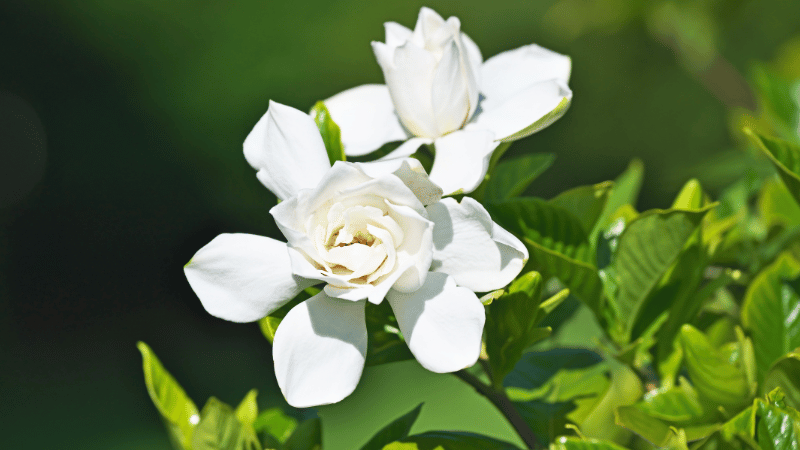Gardenias, with their creamy white flowers and glossy green leaves, are a popular choice for gardeners seeking to add beauty and fragrance to their landscapes. Selecting the right companion plants for gardenias is crucial, as it enhances their growth and flowering.
This article will delve into the best and worst companion plants for gardenias, providing insights for a thriving garden.
Good Companion Plants for Gardenias
| Plant Name | Benefits for Gardenias |
|---|---|
| Azalea | Acid-loving, enhances visual appeal |
| Camellia | Similar soil and light requirements |
| Rhododendron | Complements gardenia’s acidic soil needs |
| Ferns | Provide visual contrast and similar shade needs |
| Hydrangea | Thrives in similar soil conditions |
| Magnolia | Compatible in terms of light and soil |
| Hostas | Thrive in same light conditions, add texture |
| Ageratum | Adds color contrast, attracts beneficial insects |
| Heuchera | Adds color and texture diversity |
| Holly | Ensures similar soil and light conditions |
Here’s a detailed description of each companion plant for gardenias, focusing on their specific characteristics and how they complement gardenias:
1. Azalea:
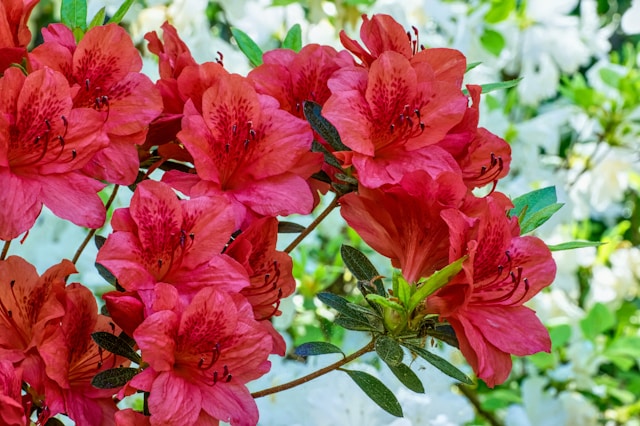
Azaleas are acid-loving shrubs known for their vibrant blooms in various colors. They thrive in well-drained, acidic soil, similar to gardenias. These plants prefer partial shade to full sun and require regular watering. Their visually striking flowers enhance the aesthetic appeal of any garden, creating a beautiful contrast with the lush, dark green foliage of gardenias.
| Attribute | Details |
|---|---|
| Scientific Name | Rhododendron spp. |
| USDA Zones | 4-9 |
| Soil Requirement | Acidic soil (pH 4.5-6.0), well-draining and rich in organic matter |
| Height and Spread | 2-8 feet tall and wide |
| Growing Conditions | Partial shade, morning sun |
| Recommended Fertilizers | Azalea or rhododendron fertilizers |
2. Camellia:
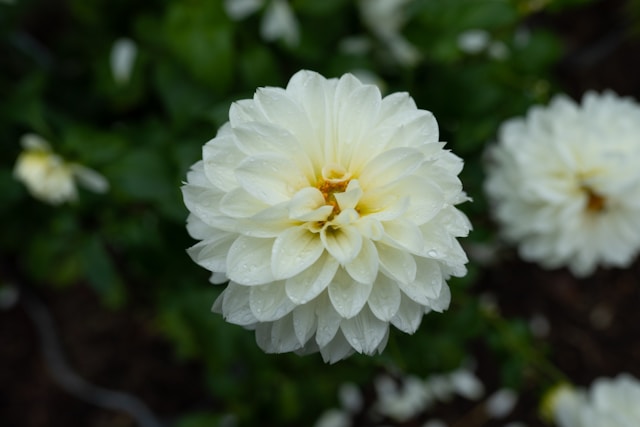
Camellias are evergreen shrubs that produce large, beautiful flowers in shades of pink, red, and white. They share similar soil and light requirements with gardenias, preferring acidic soil and partial shade. Their glossy leaves and winter blooming season provide a year-round visual interest, making them an excellent companion for gardenias.
| Attribute | Details |
|---|---|
| Scientific Name | Camellia spp. |
| USDA Zones | 6-9 |
| Soil Requirement | Well-draining, acidic soil |
| Height and Spread | 6-25 feet tall and wide |
| Growing Conditions | Partial shade, protection from afternoon sun |
| Recommended Fertilizers | Acid-forming azalea or camellia fertilizers |
3. Rhododendron:
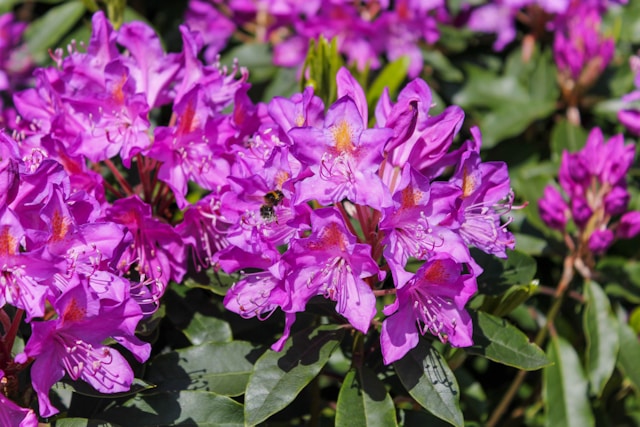
Like gardenias, rhododendrons prefer acidic soil conditions. These large, evergreen shrubs produce spectacular clusters of blooms in spring. They thrive in partial shade and require well-drained soil, making them ideal companions for gardenias in a woodland garden setting.
| Attribute | Details |
|---|---|
| Scientific Name | Rhododendron spp. |
| USDA Zones | 4-8 |
| Soil Requirement | Acidic soil (pH 4.5-6.0), well-draining and rich in organic matter |
| Height and Spread | 3-20 feet tall and wide |
| Growing Conditions | Partial shade to full sun |
| Recommended Fertilizers | Rhododendron or azalea fertilizers |
4. Ferns:

Ferns offer a stunning visual contrast to gardenias with their delicate, feathery fronds. They prefer shady conditions and moist, well-drained soil, similar to gardenias. Ferns come in various sizes and shapes, adding a textural contrast and a lush, green backdrop to the glossy leaves and white flowers of gardenias.
| Attribute | Details |
|---|---|
| Scientific Name | Many genera, including Dryopteris, Athyrium, Polystichum |
| USDA Zones | Varies by species, typically 3-9 |
| Soil Requirement | Well-draining, acidic soil rich in organic matter |
| Height and Spread | 6 inches to 6 feet tall, spread varies |
| Growing Conditions | Partial to full shade, moist conditions |
| Recommended Fertilizers | Balanced fertilizers or compost |
5. Hydrangea:

Hydrangeas are known for their large, showy flower heads and thrive in similar acidic soil conditions as gardenias. They prefer morning sun and afternoon shade. The color of their blooms can change based on the soil’s pH level, adding a dynamic visual element to the garden.
| Attribute | Details |
|---|---|
| Scientific Name | Hydrangea spp. |
| USDA Zones | 3-9 |
| Soil Requirement | Well-draining, acidic to slightly alkaline soil |
| Height and Spread | 3-15 feet tall and wide |
| Growing Conditions | Full sun to partial shade |
| Recommended Fertilizers | Balanced fertilizers or those formulated for acid-loving plants |
6. Magnolia:

Magnolia trees or shrubs are compatible with gardenias in terms of light and soil needs. They produce large, fragrant flowers and can be a stunning backdrop for gardenias. Magnolias prefer acidic soil and can tolerate full sun to partial shade.
| Attribute | Details |
|---|---|
| Scientific Name | Magnolia spp. |
| USDA Zones | 3-9 |
| Soil Requirement | Well-draining, acidic to slightly alkaline soil |
| Height and Spread | 10-80 feet tall and wide |
| Growing Conditions | Full sun to partial shade |
| Recommended Fertilizers | Balanced fertilizers or those formulated for acid-loving plants |
7. Hostas:
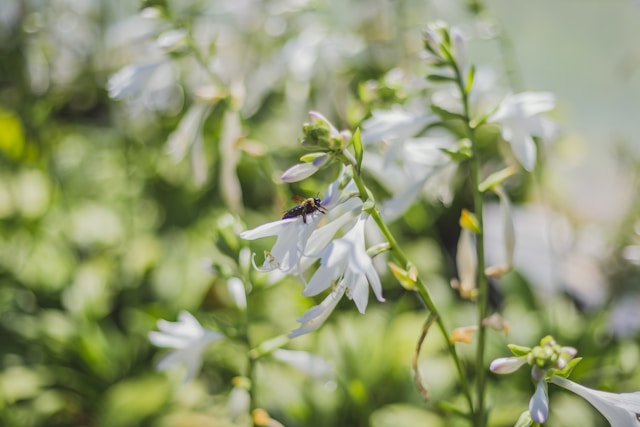
Hostas are leafy perennials that thrive in the same light conditions as gardenias. They prefer shade to partial sun and are known for their attractive foliage, which comes in various colors and patterns. Hostas add texture and a lush, green contrast to gardenia plants.
| Attribute | Details |
|---|---|
| Scientific Name | Hosta spp. |
| USDA Zones | 3-9 |
| Soil Requirement | Well-draining, fertile soil rich in organic matter |
| Height and Spread | 6 inches to 4 feet tall, 2-4 feet wide |
| Growing Conditions | Partial to full shade, moist conditions |
| Recommended Fertilizers | Balanced fertilizers or compost |
8. Ageratum:
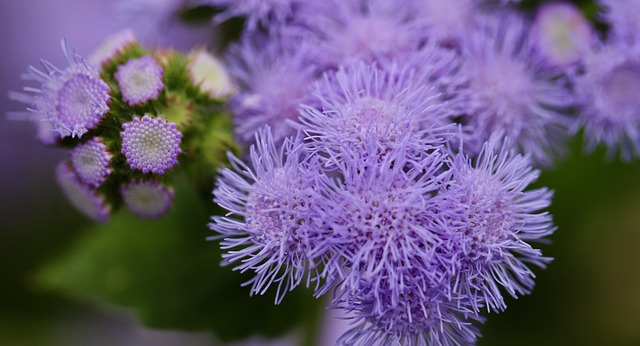
Ageratum, with its fluffy blue flowers, adds a lovely color contrast to gardenias and attracts beneficial insects. These annuals prefer full sun to partial shade and well-drained soil, making them a great addition to a gardenia flower bed.
| Attribute | Details |
|---|---|
| Scientific Name | Ageratum houstonianum |
| USDA Zones | Annual in most regions |
| Soil Requirement | Well-draining, fertile soil |
| Height and Spread | 6-24 inches tall and wide |
| Growing Conditions | Full sun to partial shade |
| Recommended Fertilizers | Balanced liquid fertilizers |
9. Heuchera:
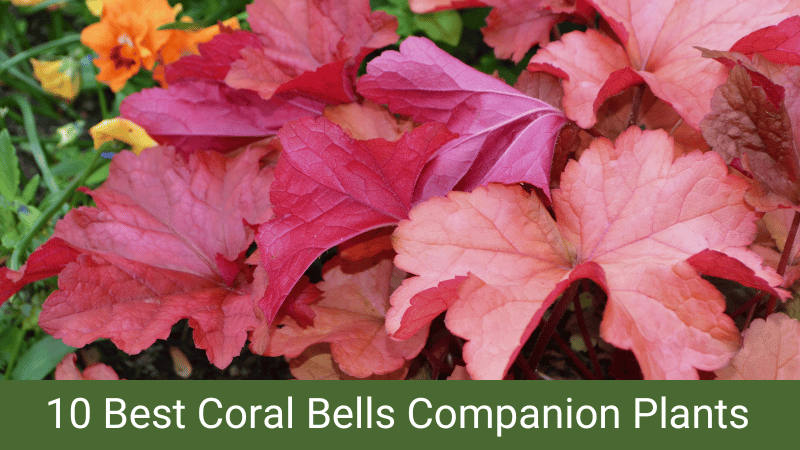
Known for their colorful foliage in shades of purple, silver, and green, Heucheras add both color and texture diversity to a gardenia landscape. They are adaptable to various light conditions, including the partial shade preferred by gardenias.
| Attribute | Details |
|---|---|
| Scientific Name | Coral Bells, Heuchera spp. |
| USDA Zones | 4-9 |
| Soil Requirement | Well-draining, fertile soil rich in organic matter |
| Height and Spread | 6 inches to 2 feet tall, 1-2 feet wide |
| Growing Conditions | Partial shade to full sun |
| Recommended Fertilizers | Balanced fertilizers or compost |
10. Holly:
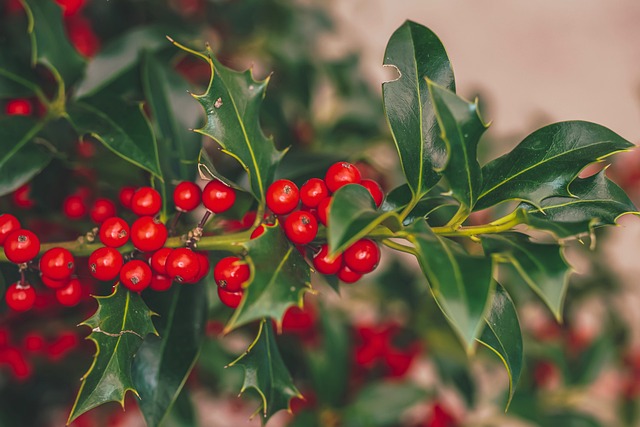
Holly plants, with their glossy green leaves and bright red berries, ensure similar soil and light conditions as gardenias. They can be used as a backdrop or a contrasting element in a gardenia garden, providing year-round interest. Holly prefers well-drained, acidic soil and can tolerate full sun to partial shade.
| Attribute | Details |
|---|---|
| Scientific Name | Ilex spp. |
| USDA Zones | 5-9 |
| Soil Requirement | Well-draining, acidic soil |
| Height and Spread | 2-50 feet tall and wide |
| Growing Conditions | Full sun to partial shade |
| Recommended Fertilizers | Acid-forming fertilizers suitable for acid-loving plants |
Bad Companion Plants for Gardenias
| Plant Name | Reasons for Incompatibility |
|---|---|
| Cacti | Very different water and soil needs |
| Lavender | Prefers alkaline, drier soil |
| Rosemary | Needs less water, more sun |
| Marigold | May attract pests harmful to gardenias |
| Tomatoes | Different watering and soil requirements |
| Grasses | Compete for nutrients and water |
| Mint | Invasive, can overpower gardenias |
| Sunflowers | Too tall, shade gardenias excessively |
| Zinnias | Prefer more sun and less acidic soil |
| Daffodils | Compete for space and nutrients |
Gardenia companion plants vegetables
Gardenias can coexist with certain vegetables, creating a mutually beneficial ecosystem. However, it’s crucial to select vegetables that share similar soil and light preferences.
| Vegetable Name | Compatibility with Gardenias |
|---|---|
| Lettuce | Tolerates shade, non-invasive |
| Spinach | Complements gardenia’s shade requirements |
| Radishes | Short growth cycle, low competition |
| Swiss Chard | Thrives in partial shade, like gardenias |
| Arugula | Prefers similar light conditions |
| Kale | Compatible in terms of light and soil |
| Broccoli | Benefits from the shade provided by gardenias |
| Beets | Thrive in similar soil conditions |
| Peas | Compatible with gardenia’s light needs |
| Bush Beans | Similar soil and watering requirements |
Scientific References
- Melissourgou, E., Kassari, N., Manoukaraki, I., Melissourgos, G., Awir, A., Vergaki, I., Dramitinos, Y., Delilai, A., Yazi, L., & Tsagliotis, N. (2019). Companion Planting in the school garden. Open Schools Journal for Open Science, 1(3), 1. https://doi.org/10.12681/osj.20220
- Bayeh, B., Alemayehu, G., Tadesse, T., & Alemayehu, M. (2022). Effect of varieties and planting dates of bread wheat-lupine intercropping system under additive design in Northwest Ethiopia. Renewable Agriculture and Food Systems, 37(5), 516–526. https://doi.org/10.1017/s1742170522000230
This structured approach towards selecting companion plants for gardenias ensures a thriving and visually appealing garden. By understanding the specific needs of gardenias and their companions, gardeners can create a harmonious and sustainable garden environment.
Zaki Infitar is the driving force and creative mind behind GreenBuilt.co. As a self-taught gardener with an unwavering passion for all things green, Zaki’s journey into the world of gardening is a testament to his dedication and love for nature.

